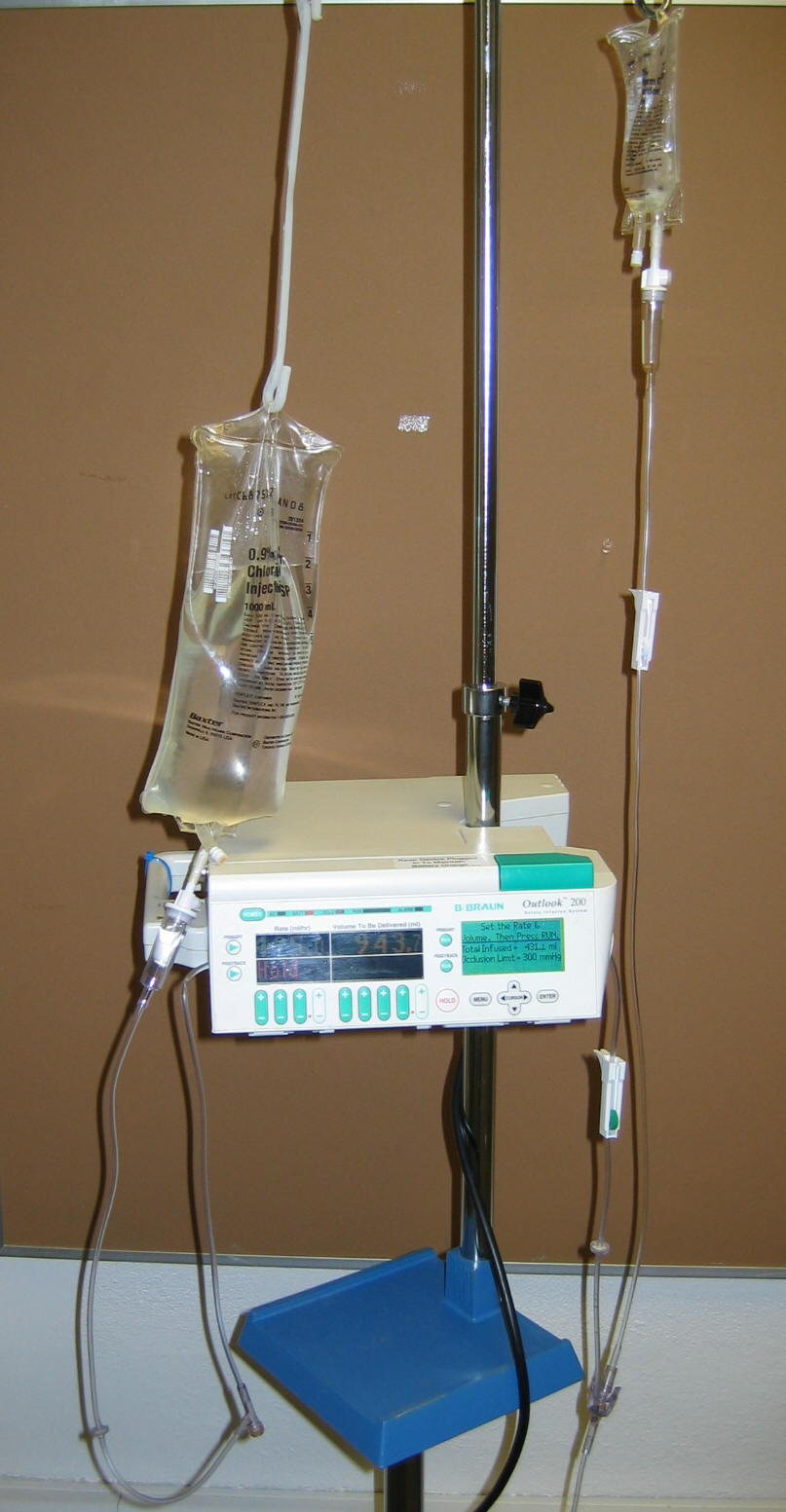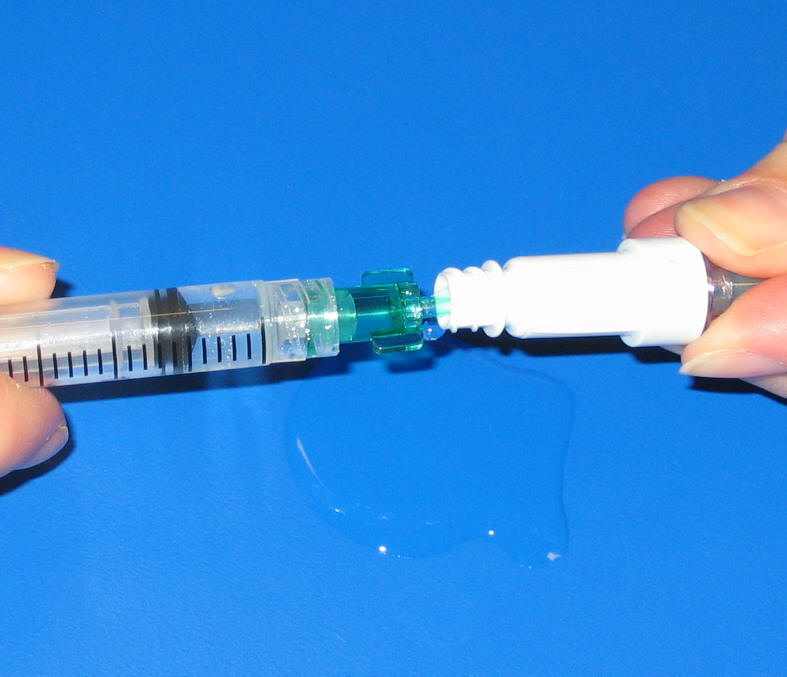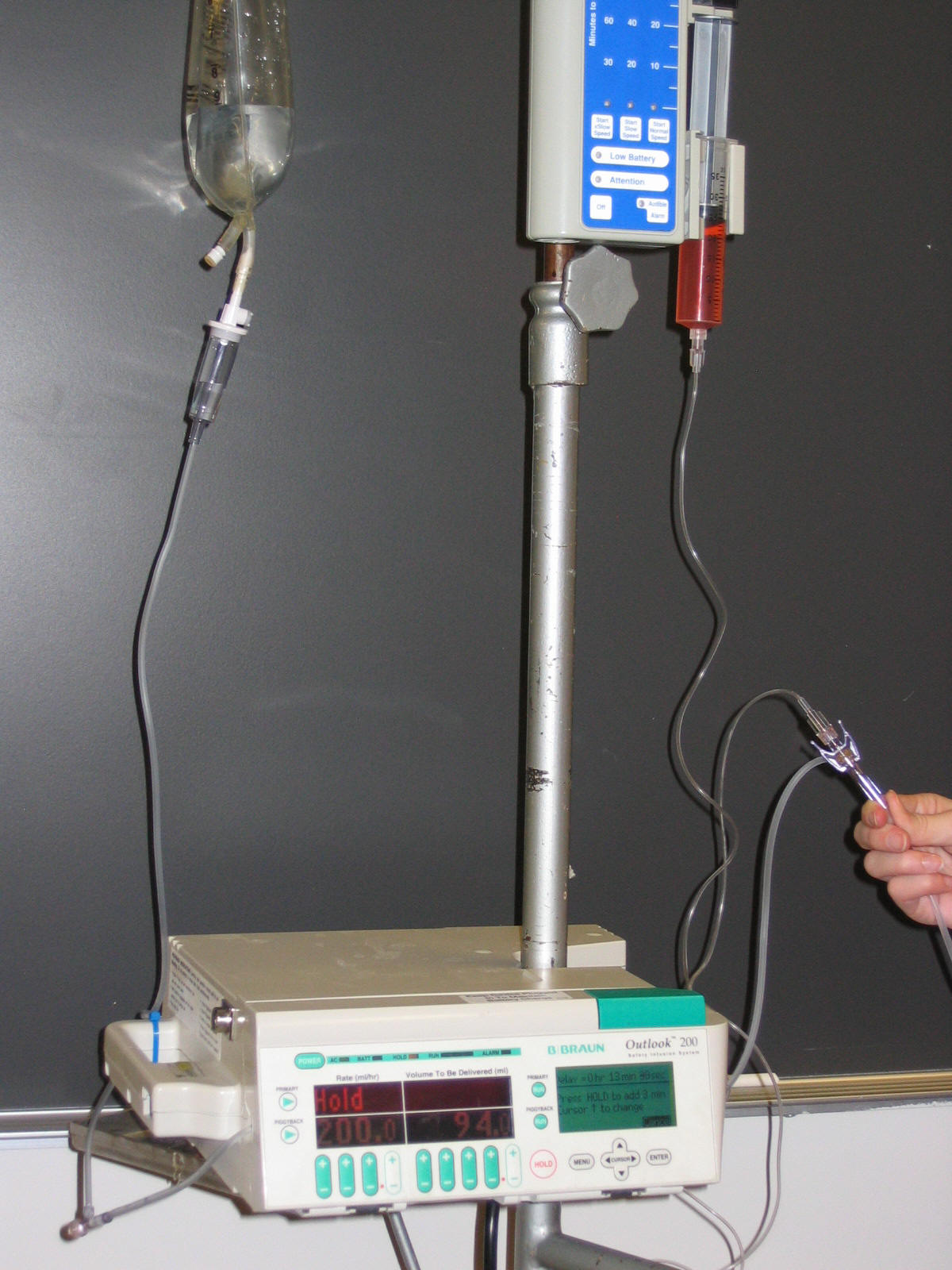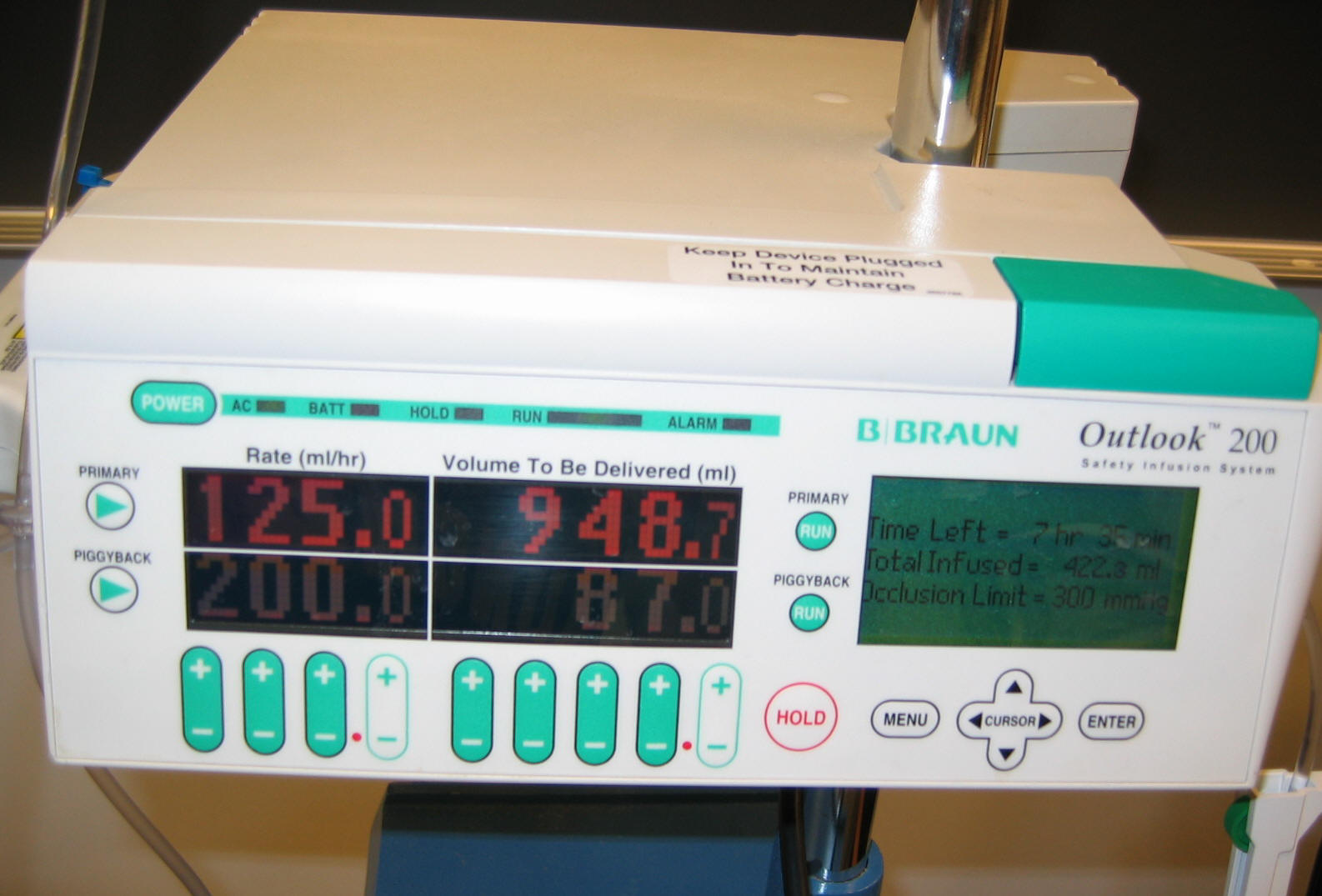| Part 3 Answers | ||
|
1. The nurse has drawn up two syringes of medications for the patients that occupy Bed 1 and Bed 2. She gets a telephone call and returns back to the medication administration for her patients and realizes that she can't remember which syringe is for which patient. Which of the following would be her best course of action?
A. Make an educated guess as to which syringe is which B. Dispose of both and call the Pharmacy for new doses C. Chart that a medication error was made and skip the dose D. Apply a label to the medications and administer them
Medication errors are one of the main ways the patients are injured or killed in the hospital setting. It is important to minimize distractions when preparing medications and reduce as many opportunities for mistakes as possible. Labeling medications or preparing medications for one patient at a time may help reduce mistakes. The eight rights are a big part of keeping patient's safe as is common sense. If there is any doubt a medication, throw it out!
|
||
| 2. You have a new order to
administer Lasix 20mg IV. The vial you have contains 50mg/10cc
of Lasix. How many cc's should you draw up? Correct answer= 4cc You can use either of the methods shown below to answer calculate the dose:
|
||
|
||
|
4. The nurse has finished administering IV Ketorolac through a patient's saline lock. It is important for the nurse to then: A. Turn the pump back on B. Re-establish the lock C. Massage the IV site D. Assess the patient's pain level
A saline lock would not have a pump attached. Massaging the IV site could potentially dislodge the catheter and cause the IV to infiltrate. The nurse would not reasses the pain level until the medication would have had time to take effect (15-30 minutes). It is important that the "lock" be re-established via injection of 2-3cc of normal saline or heparin depending on institution protocol. |
||
| 5. As you are completing your focused assessment, you note that there is a blood in the tubing of the IV near the insertion site. You should (SELECT ALL THAT APPLY): A. Assess for infiltration B. Discontinue the IV C. Flush at the closet port with 2-3cc normal saline to determine patency D. Call the physician
A small amount of blood in the IV line especially close the site can mean everything from a small occlusion for a moment to complete occlusion or infiltration of the site itself. Further assessment for infiltration is important. Flushing at the closest port with a small amount of normal saline can help determine if the line is still patent. Calling the physician is not necessary and the site should not be discontinued until the options A and C are done. |
||
|
6. The nurse needs to infuse a medication that can sometimes cause stinging when it is injected. What is the best action for the nurse? A. Dilute the medication (if it is safe for this medication) B. Call the Pharmacist for a different medication with similar properties to be given C. Infuse the medication at the port closest to the insertion site D. Pre-medicate the patient for pain
Medications such as Toradol for example are best given diluted because they can cause pain and stinging along the vein when they are infused. Be aware that not all medications can be diluted. Only in select cases (such as chemotherapy) would pre-medications for pain be appropriate. Infusing close the patient's insertion site would hurt worse. |
||
| 7. You need to administer a medication by IV push over a period of 5 minutes. What is the best way to do this? A. Push the medication and then stay with the patient for 5 minutes B. Give the dose in small increments over a period of 5 minutes (i.e. give 0.2 cc doses every minute for a 1cc total dose) C. Instruct the patient to push the plunger a small amount every 10 seconds D. Call to have the medication injected into an IVPB solution for easier administration
The method described in option B is the best way to give the medication correctly. In some cases option D may be an appropriate answer. The main consideration is that the medication be given as instructed over the specified period of time in small increments. |
||
| 8. A patient with nausea has an order for 25mg of IV Dramamine to be injected into the current IV fluids. After injecting the medication, it is important for the nurse to: (SELECT ALL THAT APPLY) A. Chart that medication was given B. Label the bag with the med, RN initials, dose, date, time and expiration C. Increase the rate of the primary IV fluids to get all of the medication in D. Re-evaluate medication effectiveness in 10 minutes
Increasing the rate of the IV fluids would not be appropriate. The idea is that the medication will slowly infuse over time. It is essential to label the IV bag if any additives are injected with the information listed in the question. This helps to prevent medication errors that occur from the mixing of two incompatible medications. |
||
| 9. The nurse is verifying that the IVPB that they have started is actually running. What is wrong with the item pictured? A. There are air bubbles in the line B. The spike for the line is not fully into the bag C. The drip chamber is full of fluid D. The incorrect type of tubing has been attached
If the drip chamber is full of fluid, the nurse will not be able to verify that the IVPB is actually infusing. There are no air bubbles in the line, the correct tubing is attached and the spike has been fully inserted into the bag. |
||
10. You are caring for a child that recently returned from surgery and is crying and groggy. The parent asks why the arm with the IV is wrapped in bandages and has a restraint on it. Your response should be: A. This will help prevent the child from pulling of their dressing B. A skin tear occurred on their arm during the surgery C. Their IV is infiltrated so this acts as a pressure dressing D. This helps prevent them from pulling out their IV
Many times children will try and pull out their IV depending on their age, how awake they are and other circumstances. Special dressings and in some cases special restraints may be used to prevent children from pulling out their IV's. It becomes even more important when the site is covered that that the nurse remove or pull back part of it to visualize the IV site per policy protocol so that the IV to verify that it has not become infiltrated. |
||
|
|





